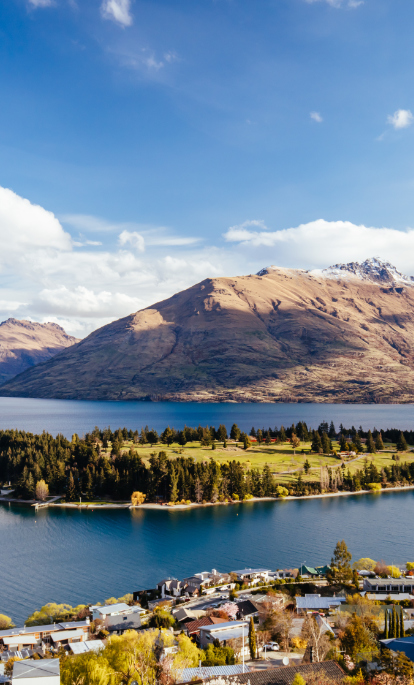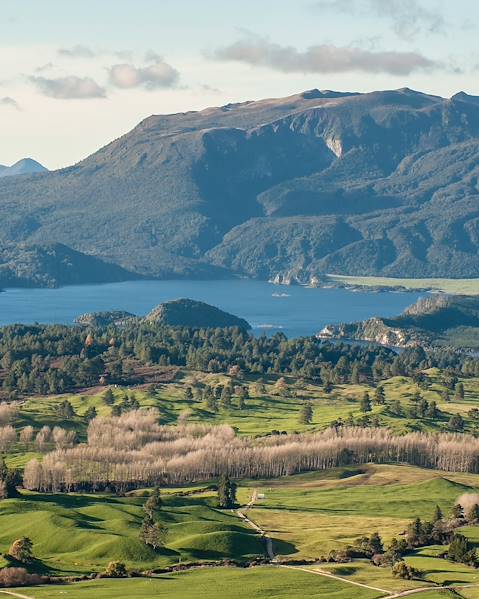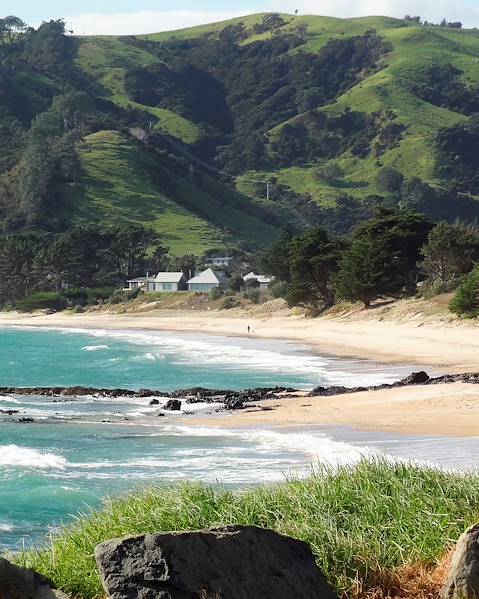New Zealand is made up of two main islands (the North Island and the South Island), and lies in the heart of Oceania. It is bordered by the Tasman Sea to the west which separates it from Australia, and the Pacific Ocean to the east. The seasons are reversed as New Zealand is in the southern hemisphere. New Zealand is generally considered to have a temperate, predominantly oceanic climate. The climate and landscapes vary considerably from north to south. The South Island, which is more mountainous, can be very wet, especially in the west coast region, but also semi-arid towards the Mackenzie Basin. The more volcanic North Island has a subtropical climate with mild temperatures all year round, especially in Northland, the northernmost region of the country. This means the climate varies greatly depending on the latitude.
Both islands experience year-round rainfall. As the weather never gets too bad, it is ideal for visiting all year round to enjoy the stunning landscapes. However, for the very best temperatures and ideal climate, December to March is the best time to visit New Zealand. If, however, you want to enjoy the ski slopes of the South Island, then winter is best - from June to August!
The North Island
New Zealand's North Island is the smaller of the two and also the most diverse in terms of geography. It's a volcanic island. Mount Ruapehu is its highest point, and is still an active volcano. Far up in Northland, the climate is very mild until winter. What do the two islands have in common? The wind blows constantly from west to east, and increases in strength during winter. Unlike the South Island, there is a fairly even distribution of rainfall throughout the region. Temperatures are pleasant all year round. Auckland has an average of 23°C. It's not uncommon to see snow during the winter months. In summer, the weather is lovely and the sunshine makes New Zealand a popular destination, especially along its coastline. With over 2,000 hours of sunshine per year, the Bay of Islands is a popular place to visit. In summer, temperatures range between 20°C and 30°C with higher temperatures during January and February. In the north and south, the nights are also warm. In winter, it is usually cooler, between 10°C and 15°C. Autumn brings slightly cooler nights than summer and there is a slight increase in rainfall. We recommend visiting during the summer months for the best temperatures, but this is also peak tourist season... To visit the North Island without the crowds, opt for October-November or April-May. But don't worry, the climate is still pretty much ideal for exploring the country.
Auckland
Auckland, New Zealand's capital, is located on the North Island. The capital has a warm and humid oceanic climate. In summer, temperatures and humidity are high. Winters are very mild and also wet. There are around 53 inches of rainfall in winter. Auckland is said to be the warmest and sunniest city in the country.
South Island
The South Island is much more mountainous and the Southern Alps extend through it. The west coast is very rainy, dubbed 'the wet coast'. The east coast, meanwhile, is drier and better protected from rainfall. As Antarctica is the closest continent to the South Island, the island can sometimes benefit from cool winds. It experiences the same wind as the North Island blowing from west to east. The mountains stop the wind coming in from the Tasman Sea causing a wet climate along the west coast. In contrast, on the east side of the island, there is a dry climate. Temperatures are cooler than those in the north, with an average of 19°C in Dunedin (compared to 23°C in Auckland). In the heart of the mountains, temperatures can be very cold, especially during winter (down to -10°C) with snowfall.
Temperatures on the coast of the South Island are much warmer. Just as in the north, the warmest months are January and February (25°C) and July is the coolest and the temperature can drop below 0°C. Summer, from December to March, is the best time to visit the South Island, when the heat is pleasant. However, if you are into skiing, then winter is the ideal time to visit as the Southern Alps have fantastic slopes.
Christchurch
Christchurch is the South Island's largest city, and lies on the east coast. It has a mild climate, with warmer summers and harsher winters. Rain is ever-present throughout the year but it rains more in winter (24 inches).

















